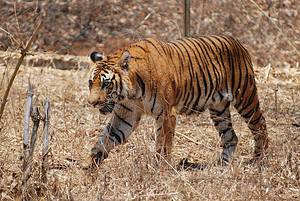Tigers have been popularized in traditional and modern media. Think of Rajah from Aladdin or Tigger from Winnie-the-Pooh. In contemporary pop culture, the most relevant reference to the popularity of tigers would have to be the Tiger King.
Tigers made that TV series popular. Seeing these exquisite, gracious creatures stirred emotion in the viewers. They were there for the tigers, just like you’re here now. You wanted to learn more about the lives of these creatures.
Bengal tigers are often larger than the other tiger species and have been endangered in India.
That is when a species of animal has had a massive disruption in its population, and they are at risk of dying out. For Bengal tigers, the cause of their endangered status is poaching, hunting, and deforestation as the human population grows.
Indeed, our growth can sometimes mean the destruction of other astonishing creatures. That’s why we must learn about these animals to better arm ourselves against our mistakes.
Where Do Bengal Tigers Live?
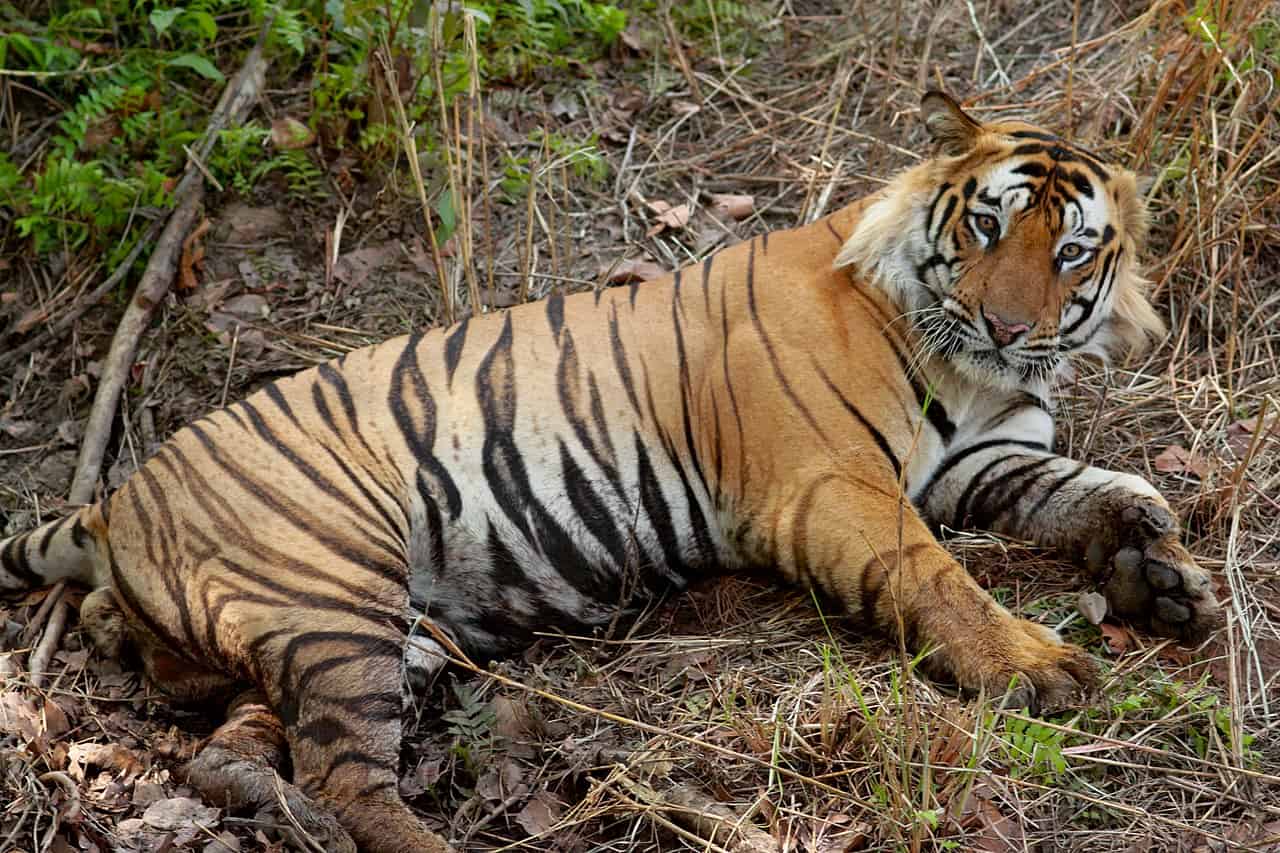
Bengal tigers live in India, Nepal, Bangladesh, and Bhutan.
©Brian Gratwicke / CC BY 2.0, Flickr – License
Bengal tigers have lived in view of the glowy mountains of Nepal and the forests of India, Bangladesh, and Bhutan. They originate from India and have migrated outward and remain there nowadays due to their endangered status.
The mangroves of their habitat in the Sundarbans were twisted plant life. A mangrove forest is not like a rainforest; it is a thriving ecosystem. Bengal tigers rule mangrove forests like lions rule the savannah and are the kings of these habitats.
Not many creatures can thrive in forests, rainforests, and mangroves. They are true giants among us.
What Do Bengal Tigers Look Like?
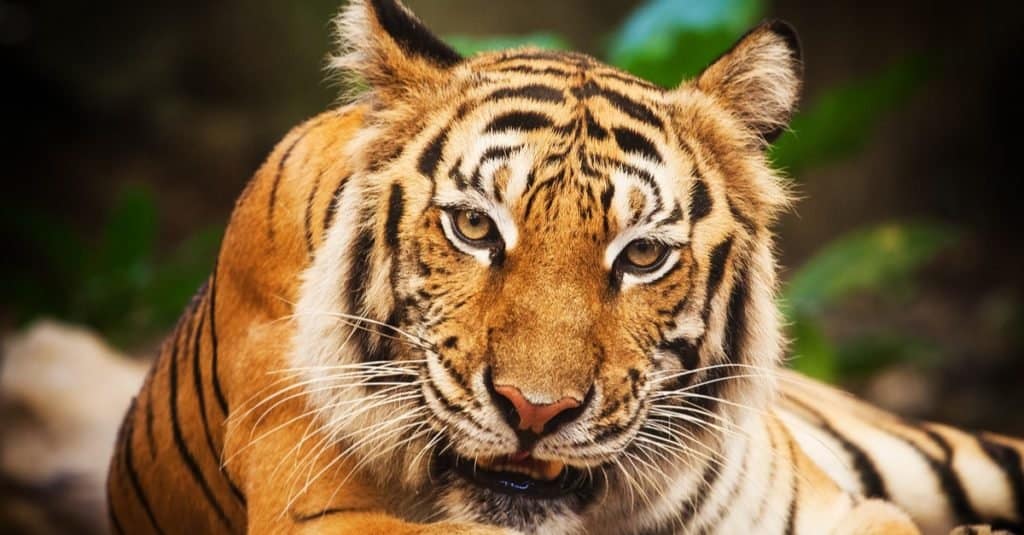
Bengal tires are yellow and orange with black stripes and white undersides.
©visa netpakdee/Shutterstock.com
Bengal tigers can be anything from yellow to deep burnt orange. Their stomachs and inner limbs are a plush white with black stripes across the tops of their bodies. They also have golden or hazel eyes and pink noses.
Tigers have always been relevant for their grace and beauty, and their colors stand out. The pattern on their fur is known as the Bengal cat, with unique and sought-after markings.
Bengali tigers grow between 9 and 10 feet long and weigh upward of 600 lbs. Their canine teeth can be almost four inches long, unique for a giant feline. Without access to appropriate prey, they would pounce at what they see.
What Do Bengal Tigers Eat?
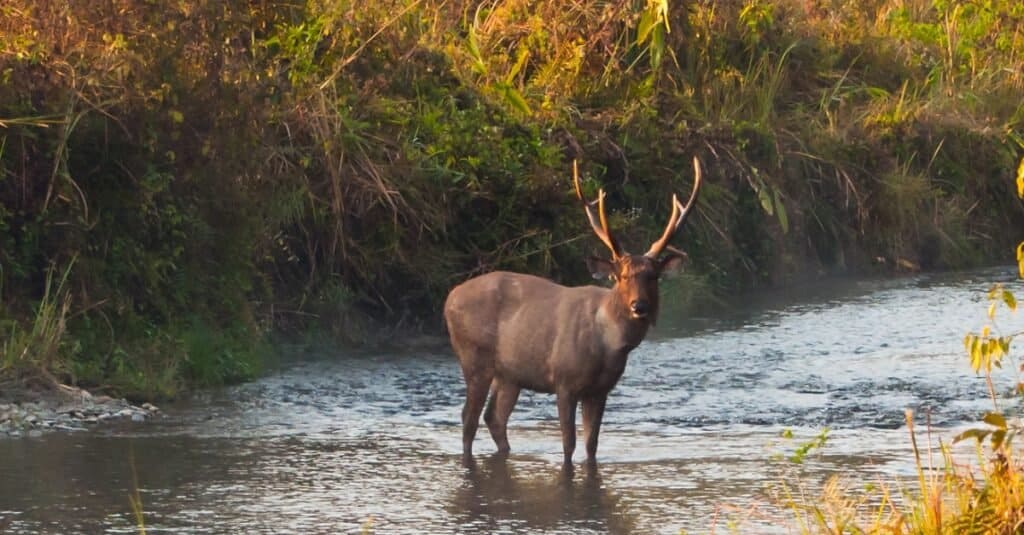
Part of a Bengal tiger’s diet includes deer, wild boars, goats, and cattle.
©iStock.com/neelsky
One of the reasons Bengal tigers have been declining in population is that their prey is reducing due to deforestation. With nothing to hunt, they struggle to survive. Once they prey on human livestock, poaching begins.
Locals feel justified in defending their food. Their existence limits the life of the tiger’s prey and the tiger itself.
When prey is in abundance, the Bengal consumes:
Without them, the tigers hunt for prey less suited. That and poaching are the most significant force in their decline. There are less than 2,000 Bengal tigers left roaming the wild.
Bengal tigers are carnivores, meaning they only eat meat. Access to these animals is vital as they can’t hunt for smaller prey, though they may try.
Other prey included by the Journal of Zoology:
- Antelopes
- Crocodiles
- Hares
- Leopards
- Water Buffalo
If a group of tigers converges, they sometimes will take down a larger animal like an elephant. That is not as common as the other prey listed above, as stated in the European Journal of Ecology.
How do Bengal tigers live?
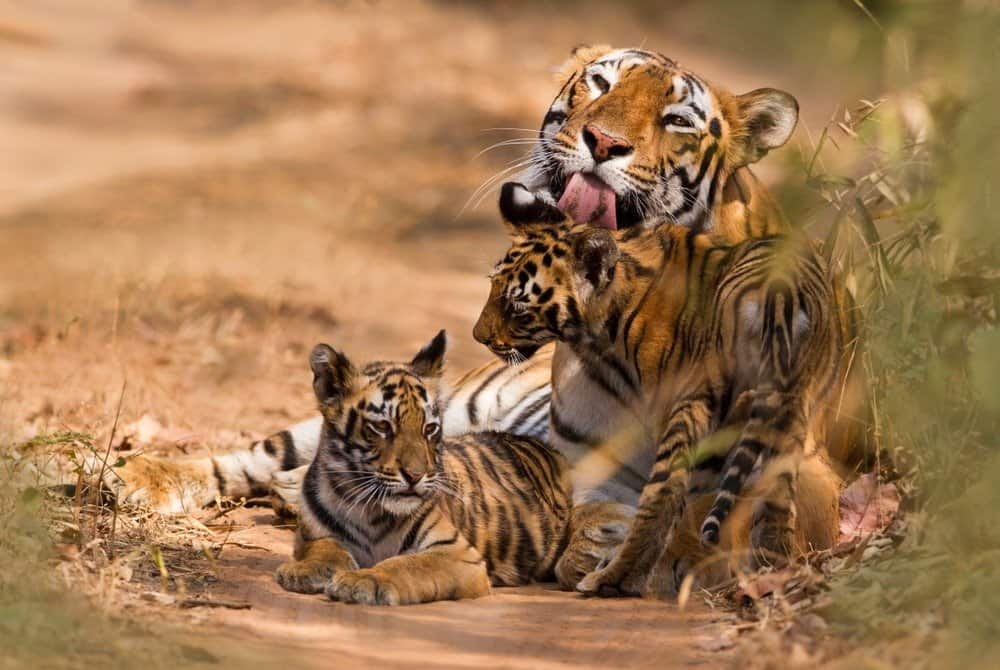
As solitary creatures, Bengal tigers stay far apart from each other.
©Anuradha Marwah/Shutterstock.com
Bengal tigers exercise by mapping their territories and living their large cat lives. They hunt their prey, often deer and boar. Humans are their predators.
Without access to food, they hunt livestock or attack people. Then they are hunted down and killed to keep villagers safe.
As solitary creatures, Bengal tigers stay far apart from each other, another reason they require vast territory. Captivity isn’t always the best answer.
What Do Bengal Tigers Need to Survive?

Over time, the population of the Bengal tigers should rise, and they will be once again kings of their natural territories.
©Muhammad Mahdi Karim, GFDL 1.2, via Wikimedia Commons – License
To survive in the wild, we have to stop preying on the Bengali tiger population. For now, we will keep raising them in captivity to maintain this glorious species.
When it comes to Bengal tigers, the question is, what happens next if they can’t find food? Do we save them? Or do we let them die?
Over time, the population of the Bengal tigers should rise, and they will be once again kings of their natural territories.
The photo featured at the top of this post is © iStock.com/Cheryl Ramalho
Thank you for reading! Have some feedback for us? Contact the AZ Animals editorial team.





